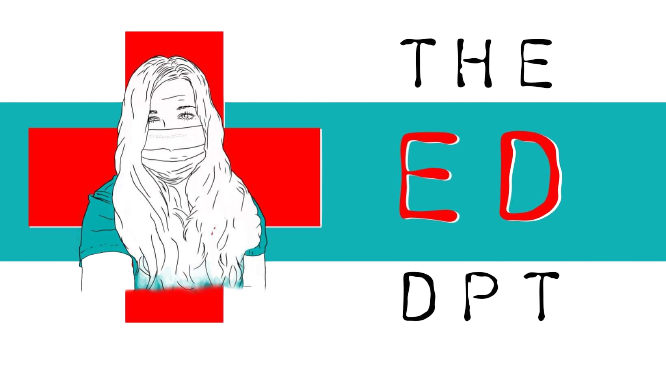By Dr. Nica Jacobson
Article: Implementation of the Canadian C-Spine Rule: prospective 12 centre cluster randomised trial.
Take 5 – 5 Critical Takeaways to Improve Your Practice
- The Canadian C-Spine Rule is highly sensitive and can help providers determine if radiography is necessary.
- You can only use the Canadian C-Spine Rule with alert and stable adults with blunt head or neck trauma.
- The rule consists of: high risk for needed radiography (age, mechanism of injury, paresthesias), low risk factors allowing safe assessment of ROM (type of MVC, sitting position, walking, delayed neck pain, no midline cervical tenderness), and can the patient rotate their head 45 degrees left and right?
- Hospitals that followed the Canadian C-Spine Rules had significantly lower cervical spine imaging rates compared to the control hospitals.
- Realistic, cost-effective, and efficient implementation strategies are critical to the rules being used consistently in order to lower rates of unnecessary cervical spine imaging.
A 33 year old patient comes into the ED after getting rear-ended during rush hour traffic on Friday afternoon. They were in stand still traffic when they were caught off guard and hit from behind by a car going 10 mph. The patient ambulated into the ED with family present and stated that they felt fine until an hour ago when they started to get a headache. What should you do for this patient? Do they need imaging? What needs to be ruled out before you can treat them for whiplash and/or concussion? How much time do you need? What resources are required?
The study “Implementation of the Canadian C-Spine Rule: prospective 12 centre cluster randomised trial” evaluates the implementation strategy required to use the Canadian C-Spine Rules in different Canadian hospitals (1). In this final blog post about how to use validated and evidence based rules in the ED, you will refresh your memory on how to use them, who to use them with, how to interpret your results, and the impact the Canadian C-Spine Rule has on EDs. Here are my five takeaways from this article.
- The Canadian C-Spine Rule is highly sensitive and can help providers determine if radiography is necessary.
As with all clinical practice guidelines, providers love rules that are 100% sensitive. In this study, the rule did have 100% sensitivity, with no adverse events and no fractures missed.
- You can only use the Canadian C-Spine Rule with alert and stable adults with blunt head or neck trauma.
Know your audience! In this study, the Canadian C-Spine Rules were only used with patients with acute blunt head/neck trauma (within 48 hours), having a GCS of 15 and stable vitals.
- The Canadian C-spine Rule consists of…
What are they?
- Are there high risks present (age, mechanism of injury, paresthesias)?
- If yes, imaging is warranted
- If not, proceed to the next question
- Are there low risk factors allowing safe assessment of ROM (type of MVC, sitting position, walking, delayed neck pain, no midline cervical tenderness)?
- If no, imaging is warranted
- If yes, proceed to next question
- Can the patient rotate their head 45 degrees left and right?
- If no, then perform imaging
- If yes, then don’t perform imaging.
- Hospitals that followed the Canadian C-Spine Rules had significantly lower imaging rates compared to the control hospitals.
The rule works! There was a 25% relative difference between the imaging rates of the intervention and control groups. Not only did imaging rates go down at the intervention hospitals, but imaging rates went up at the control hospitals. The study found that the intervention community hospitals had lower imaging rates than the academic intervention hospitals.
- Realistic, cost-effective, and efficient implementation strategies are critical to the rules being used consistently in order to lower rates of unnecessary cervical spine imaging.
What’s the point of a sensitive rule if you don’t use it? In this study, they used educational material (posters, pocket books, manuscripts, and a mandatory teaching session) to teach physicians how to use the rule. The physicians also agreed to the policy of following the rule in clinical decision making and were reminded of the rule when ordering imaging in real time.This study found that doctor compliance (82.9%) and rule interpretation were the most challenging barriers to overcome, to the point that radiology techs were used as “gatekeepers.”
Summary
What makes this article unique is that they assessed the Canadian C-Spine Rule for what it does, as well as the intentional strategy associated with implementing the use of the rule. Based on the findings of this article, physicians can learn to adopt these rules as standard practice in order to reduce health care costs and patient wait times without compromising patient care.
Of course, PTs should use the Canadian C-Spine Rules in their own practice, whether it is in the ED, on the sidelines of a soccer game, or in a direct access primary care setting. For patients that need imaging, we can refer appropriately. For those that do not need imaging per the rules, we can start to mobilize and treat patients for their symptoms knowing that the test has high sensitivity and that we can start making an impact immediately on patient outcomes and well-being.
- Stiell IG, Clement CM, Grimshaw J, Brison RJ, Rowe BH, Schull MJ, Lee JS, Brehaut J, McKnight RD, Eisenhauer MA, Dreyer J, Letovsky E, Rutledge T, MacPhail I, Ross S, Shah A, Perry JJ, Holroyd BR, Ip U, Lesiuk H, Wells GA. Implementation of the Canadian C-Spine Rule: prospective 12 centre cluster randomised trial. BMJ. 2009 Oct 29;339:b4146. doi: 10.1136/bmj.b4146. PMID: 19875425; PMCID: PMC2770593.

